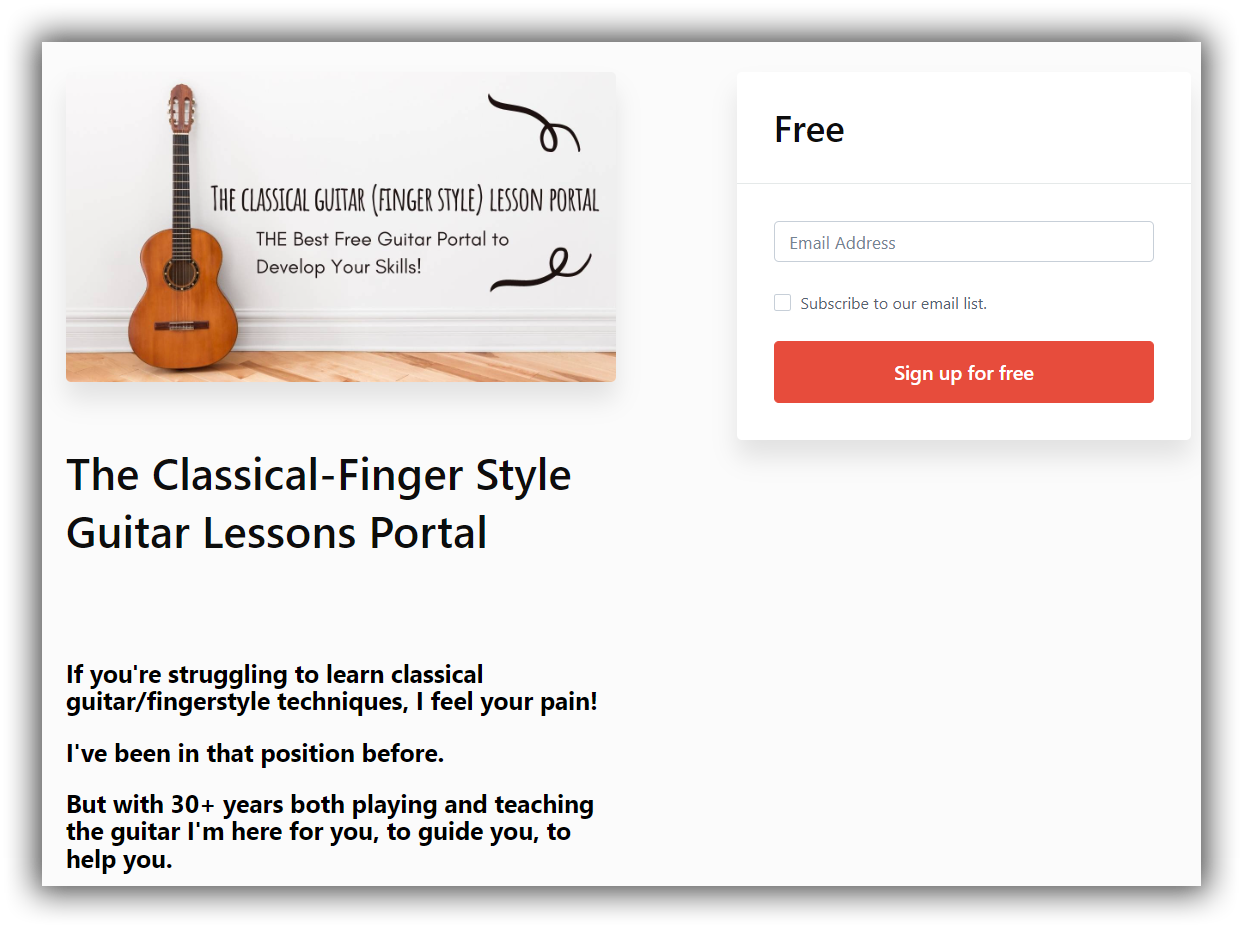- Home
- Classical Fingerstyle Portal
- 15 Actionable Guitar Lessons
- Classical Guitar Technique
- Guitar Lessons
- Beginner Lessons
- Guitar History
- The Renaissance Guitar
- Guitar Time Line
- Classical Guitar Blog
- Contact
- About Author
- Site Search
- Privacy Policy
- Site Map
- Classical Guitar Study Course 3.0
- Instant Classical Guitar Repertoire
- Classical Guitar Lessons For Beginners
Sight Reading Guide
Sight Reading Guide - Make sight reading and music memorization a snap...
I've provided this Sight Reading Guide because it’s a sad fact, but many guitar players fear sight reading and memorizing their pieces and try to avoid it at all costs. But in reality, sight reading and memorization is like anything else; the more you practice it the better you will get!
This guide is designed to give you the techniques that will lead to confidence in sight reading and memorization of your music...
 Music Notation Sight Reading Guide
Music Notation Sight Reading GuideThe Benefits of Being Able to Sight Read Music
Sight reading, or the ability to read and perform music notation in real-time without prior rehearsal offers several benefits to musicians. Here are some of the advantages of being able to sight read music:
- Enhanced Learning and Rehearsal: Sight reading skills enable musicians to quickly learn and understand new pieces of music. They can sight read through a composition to gain a general understanding of its structure, melody, harmony, and rhythm. This proficiency saves time during rehearsals, as musicians can focus on refining specific passages or addressing other musical elements rather than struggling with basic note-reading.
- Versatility: Musicians who can sight read proficiently have greater versatility in their repertoire choices. They can explore a wider range of musical styles, genres, and periods since they can quickly adapt to new compositions. This flexibility allows them to participate in various musical settings, such as orchestras, bands, ensembles, and accompaniment roles, where reading music on the spot is crucial.
- Performance Opportunities: Sight reading ability opens doors to a broader range of performance opportunities. Musicians who can sight read are better equipped to handle impromptu performances, auditions, and last-minute requests. They can confidently take part in jam sessions, studio recordings, or even substitute for other musicians when needed. This skill is particularly valuable for professional musicians who often encounter new music or collaborative situations.
- Musicianship Development: Sight reading helps develop musicianship skills. By regularly sight reading music, musicians improve their understanding of musical notation, timing, key signatures, dynamics, and other musical markings. It enhances their ability to analyze and interpret music quickly, fostering a deeper appreciation for the structure and complexity of compositions. This, in turn, can improve their overall musicianship and performance abilities.
- Music Education: Sight reading proficiency is highly beneficial for music educators and students alike. Teachers who can sight read can quickly demonstrate musical examples and exercises to their students, making the learning process more efficient. For students, sight reading allows them to explore a wide range of musical repertoire and develop a deeper understanding of music theory and composition.
- Improvisation Skills: Sight reading can improve improvisation abilities. When musicians can quickly read and interpret music, they can more easily translate the written notation into spontaneous musical ideas. Sight reading helps develop aural skills, allowing musicians to internalize patterns, scales, and chord progressions, which can be applied creatively during improvisation.
Overall, sight reading is a valuable skill for musicians, offering increased learning efficiency, versatility, performance opportunities, musicianship development, and improvisation skills. It expands musical horizons and allows musicians to confidently engage with a wide variety of musical contexts and experiences.
You need to form habits so that they become second nature. You do this by doing it consistently, day by day, week by week, and year by year. If you’re like the proverbial 'tortoise' (as in The Hare and the Tortoise), you’ll find yourself gradually gaining mastery of not only sight reading and memorization of your music, but all of what you practice.
Trying to do a big, quick “brain dump” never works. Rather, it’s the “slow and steady” pace of the tortoise that always wins out. Which method are you going to use? Good! Let’s start with sight reading in Section 1 and move on to memorization techniques in Section 2.
Here's a little excerpt from the Sight Reading Guide...
Tip 8: Look for Natural “Phrases”
If you try to compare your music to that of a singer, you’ll realize there are always phrases (a unit of melody or group of notes in succession) in music. And at the end of each natural phrase, where the singer would take a breath. The guitarist also has to “take a breath” when playing music as this will indeed make your interpretation more musical and the whole piece “breathe” in general.
In other words, it won’t have the feeling of being rushed, stilted, or in some other way unnatural and unpleasant to the ears. Well, if you could detect the natural phrases in music, you’d stand a better chance of playing and sight-reading more accurately and successfully.
So what do you look for in phrases? Often times, the music will have “slurs” over it. These are markings that look like ties BUT cover a series of notes and mean that you play all the notes under the markings in a legato (smooth and connected) way.
These are NOT to be confused with guitar slurs, which are the Trill, pull off, and hammer on. Here is a piece from the beginner series that has slur marks over the phrases…
I hope you enjoy this resource I have made for you.
Here for you,
Trevor M.
And don't forget to make use of the F*R*E*E Classical-Fingerstyle Portal lessons...
Recent New Pages:
What is Classical Guitar Playing?
